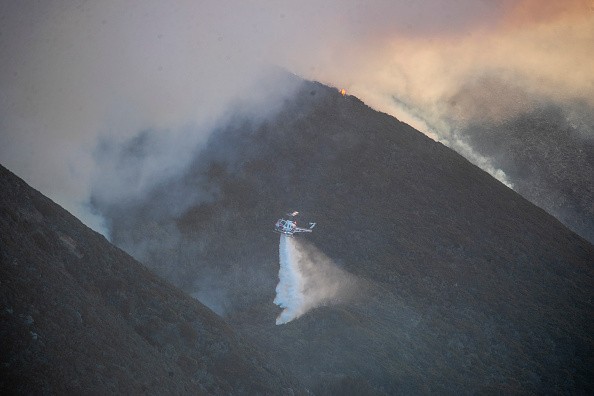On Friday night and Saturday morning, the Colorado Fire burnt 1,500 acres in California, causing residents of many California communities to flee their homes. Late January is not a common time for wildfires to start, so many locals in the area were taken aback.

Wildfire
The fire started late Friday evening and was initially reported at 7:15 to 7:30 a.m. At 10 p.m., mandatory evacuations on Palo Colorado Road were issued, and evacuation recommendations were in force along Highway 1.
Highway 1 was closed between the entrance to Andrew Molera State Park in Big Sur to Rio Road in Carmel less than an hour later. At the onset of the fire, strong winds were blowing in the region at 25-30 mph.
Cal Fire advised KCRA 3 and the 13 agencies that were continuously fighting the fire that the fire was in a difficult-to-access location and was blazing west toward Highway 1.
The fire continued to burn and spread late Friday night while humidity levels remained in the teens. However, the heat signature on satellite was dropping between 11 and 11:30 p.m., according to the National Weather Service of the Bay Area. Once the offshore winds subsided, Winds had dropped to 20-25 mph at that point, but even the slightest wind gusts may lift embers into the air, spreading the fire and fanning the flames.
@PGE4Me webcam at CTRY CLUB HTS in Carmel Valley pointed toward the fire ongoing along the Big Sur Coast near Rocky Creek and Palo Colorado Canyon. Please avoid Highway 1 south of Carmel. Humidity is in the teens with gusts around 35 mph! #CAwx #CAfire pic.twitter.com/EM8dEy2HKg
— NWS Bay Area 🌉 (@NWSBayArea) January 22, 2022
Going Near a Residential Area
As the fire grew dangerously near to the hamlet, the American Red Cross organized a shelter in Carmel Middle School late Friday evening for people who had been ordered to evacuate.
Several surrounding communities in coastal Southern California reported witnessing the fire from their homes.
The fire had burnt over 1,500 acres and was 0 percent controlled by midnight Saturday, as officials went house to door to check that evacuation orders were implemented. The fire was burning in Rocky Creek and Bixby, California, which were both evacuated.
Burning Communities
The flames have proceeded to burn communities along the Pacific Coast Highway, which is still blocked as of Sunday afternoon, with the fire barely 25% controlled.
According to PowerOutage.us, more than 30,000 consumers in California were without power as of Sunday evening. Due to probable damage to the water system infrastructure and loss of pressure due to power outages, the Monterey County Health Department has issued a boil water alert for individuals in the Colorado Fire region until further notice.
This wildfire broke out as Santa Ana winds blew across Southern California, which are high-speed and destructive winds that blow from the mountains to the ocean in Southern California regularly, causing flames to spread quickly.
Power Outage
On Saturday, high wind warnings and advisories from the Sierra Nevada to Southern California were in force, with gusts projected to subside on Sunday.
Below the Santa Ana Mountains and the San Bernardino County mountains, wind gusts exceeding 80 miles per hour were observed. The strongest peak wind gust was 83 mph at Toro Peak.
It's almost 8 p.m. The fire was estimated to be 35 percent controlled and 700 acres on Sunday.
© 2026 NatureWorldNews.com All rights reserved. Do not reproduce without permission.





